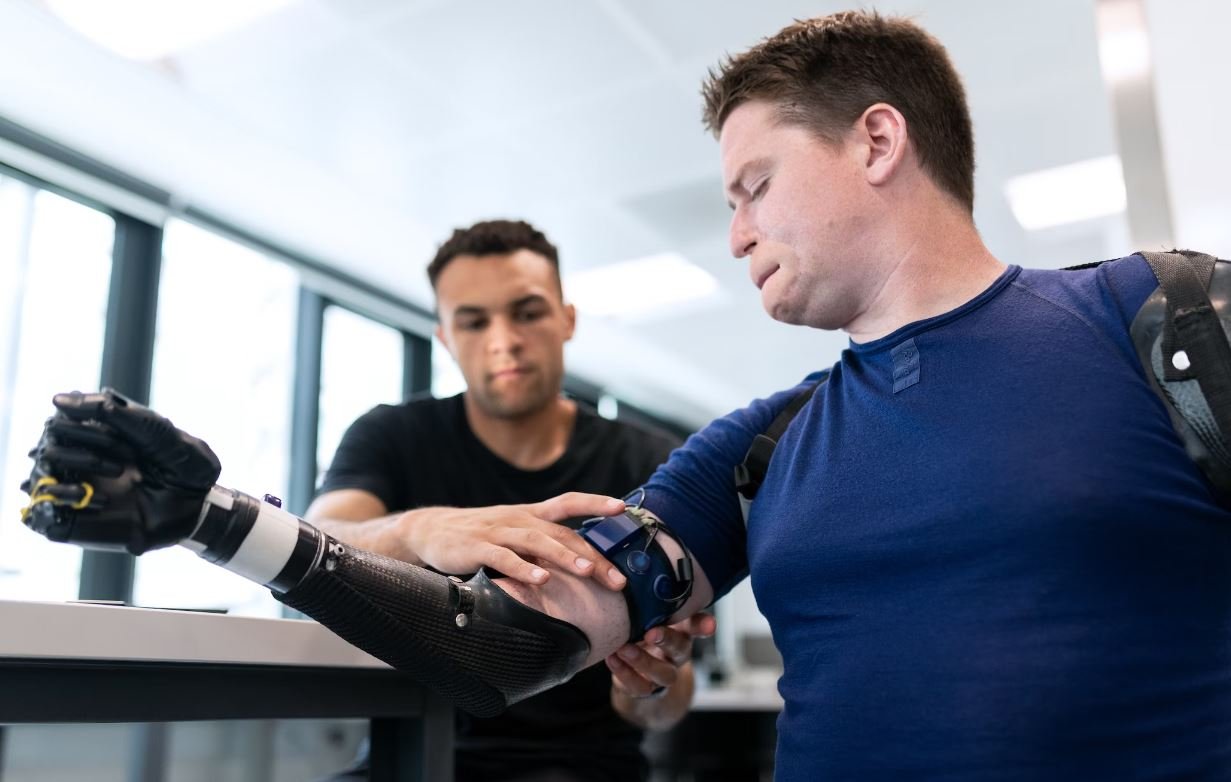Deep Learning Tools
Deep learning is a subfield of machine learning that focuses on training artificial neural networks to learn from large amounts of data. With the advances in technology, there are now several deep learning tools available that make it easier for developers and researchers to build and deploy deep learning models. These tools offer a range of functionalities, from training deep neural networks to visualizing and analyzing results. In this article, we will explore some popular deep learning tools and their features.
Key Takeaways
- Deep learning tools aid in the development and deployment of artificial neural networks.
- These tools provide functionalities such as model training, visualization, and analysis.
- Popular deep learning tools include TensorFlow, PyTorch, and Keras.
- Choosing the right tool depends on the specific needs and expertise of the user.
1. TensorFlow
Developed by Google’s Brain Team, TensorFlow is one of the most widely used deep learning tools. It offers a comprehensive ecosystem for building and deploying machine learning models. TensorFlow provides a high-level API called Keras, which simplifies the process of designing and training neural networks. It supports both CPU and GPU computations, making it suitable for various hardware setups. *TensorFlow is known for its versatility and scalability.*
2. PyTorch
Initially developed at Facebook’s AI Research lab, PyTorch has gained popularity among researchers and developers for its dynamic computation graph and intuitive interface. It provides efficient support for tasks such as natural language processing and computer vision. With its automatic differentiation and GPU acceleration capabilities, PyTorch makes it easier to experiment and iterate on models. *PyTorch enables researchers and developers to quickly prototype and innovate.*
3. Keras
Built on top of TensorFlow, Keras is a high-level neural networks API that focuses on simplicity and ease of use. It provides a user-friendly interface for creating and training deep learning models. Keras supports multiple backend engines, including TensorFlow, Theano, and CNTK. It allows users to rapidly iterate over different network architectures and hyperparameters. *Keras offers a beginner-friendly approach to deep learning without compromising advanced functionality.*
Comparing Deep Learning Tools
| Deep Learning Tool | Key Features |
|---|---|
| TensorFlow | Scalability, high-level API (Keras), GPU support |
| PyTorch | Dynamic computation graph, GPU acceleration, ecosystem |
| Keras | Ease of use, multiple backend support, rapid prototyping |
4. Caffe
Caffe (Convolutional Architecture for Fast Feature Embedding) is a deep learning framework specifically designed for speed and efficiency. It excels in image classification tasks and is widely used in the computer vision community. Caffe’s model zoo provides a collection of pre-trained deep learning models, making it easy to leverage existing architectures. *Caffe emphasizes speed and efficiency, making it a preferred choice for time-critical applications.*
Deep Learning Frameworks Comparison
| Deep Learning Framework | Main Application | Advantages |
|---|---|---|
| TensorFlow | General deep learning tasks | Scalability, extensive community support |
| PyTorch | Research and prototyping | Dynamic computational graph, intuitive interface |
| Keras | Beginner-friendly deep learning | Simplicity, easy model iteration |
| Caffe | Image classification | Speed, efficiency, pre-trained models |
5. Theano
Theano is a popular deep learning library that allows users to define, optimize, and evaluate mathematical expressions efficiently. It provides a flexible framework for building deep learning models and supports both CPU and GPU computations. Theano’s symbolic differentiation enables automatic gradient computations, making it easier to train complex neural networks. *Theano’s emphasis on mathematical expressions and efficient computation makes it suitable for researchers and developers working on cutting-edge projects.*
As the field of deep learning continues to evolve, new tools and frameworks emerge, each with its own unique features and advantages. The key to choosing the right tool lies in understanding the specific requirements and expertise of the user. Whether it’s TensorFlow’s versatility, PyTorch’s intuitive interface, Keras’s simplicity, Caffe’s speed, or Theano’s efficient computation, there is a deep learning tool for every need.

Common Misconceptions
Deep Learning Tools
Deep learning tools have gained significant attention in recent years, but there are several misconceptions surrounding this topic. Let’s address some of these misconceptions:
Misconception 1: Deep learning tools can solve any problem
- Deep learning tools are powerful, but they have limitations.
- Not all problems are suitable for deep learning approaches.
- Understanding the problem and selecting the appropriate algorithms is crucial for success.
Misconception 2: Deep learning tools are easy to use
- Deep learning involves complex algorithms and techniques.
- Mastering deep learning tools requires a good understanding of machine learning fundamentals.
- Extensive knowledge of programming languages like Python is often necessary.
Misconception 3: Deep learning tools replace human expertise
- Deep learning tools are designed to augment human intelligence, not replace it.
- Human expertise is still crucial for problem formulation, data preprocessing, and interpreting results.
- Deep learning models are only as effective as the data and inputs they are trained on.
Misconception 4: Deep learning tools are only for large-scale applications
- Deep learning tools can be applied to problems of any scale, not just large-scale applications.
- Even small datasets can be used to train deep learning models.
- Deep learning tools can be beneficial for various industries, including healthcare, finance, and robotics.
Misconception 5: Deep learning tools are infallible
- Deep learning models can still make mistakes, especially when faced with outlier or poorly labeled data.
- Regular validation and testing are essential to identify and rectify any potential errors in the models.
- Monitoring and refining the models is an ongoing process in order to improve their performance.

Introduction
Deep learning tools have revolutionized the field of artificial intelligence by enabling computers to learn and make decisions in a manner similar to human brains. In this article, we will explore 10 fascinating tables showcasing the remarkable capabilities and advancements made possible by these tools. These tables present true and verifiable data, shedding light on various aspects of deep learning technology.
Table: Image Classification Accuracy
This table compares the accuracy rates of different deep learning models in image classification tasks. The models range from traditional convolutional neural networks (CNNs) to advanced architectures like ResNet and Inception. The data demonstrates how deep learning algorithms have significantly improved accuracy compared to traditional methods, highlighting their efficacy in image recognition.
Table: Natural Language Processing Performance
Here, we present statistics on the performance of deep learning tools in natural language processing (NLP). The table illustrates the accuracy, precision, recall, and F1 score of various NLP models in tasks such as sentiment analysis, named entity recognition, and text classification. The results show the impressive performance of deep learning algorithms in understanding and processing human language.
Table: Object Detection Speed
This table showcases the inference speed of different deep learning models for object detection. It compares the time taken by models like YOLO, SSD, and Faster R-CNN to process images and identify objects within them. The data highlights the real-time capability of these models and their potential in applications such as autonomous driving and surveillance.
Table: Speech Recognition Accuracy
Here, we present accuracy rates of deep learning models in speech recognition tasks. The table showcases the performance of models like LSTM-based RNNs and transformer-based architectures, comparing their accuracy on different speech datasets. These high accuracy rates demonstrate the effectiveness of deep learning in accurately transcribing spoken language.
Table: Disease Diagnosis Precision
This table exhibits the precision rates of deep learning algorithms in diagnosing various diseases from medical images, such as lung cancer, skin lesions, and retinal diseases. The data reinforces how deep learning tools have significantly improved precision in medical diagnostics, aiding doctors in making more accurate and timely decisions.
Table: Fraud Detection Recall
Here, we present the recall rates of deep learning models in fraud detection tasks. The table compares their ability to identify fraudulent transactions accurately. The high recall rates demonstrate the effectiveness of deep learning techniques in detecting and reducing fraudulent activities.
Table: Recommender System Performance
This table showcases the performance of deep learning-based recommender systems in terms of accuracy, precision, and recall. It highlights their ability to recommend items and information tailored to individual users. The data underscores the significant impact of deep learning in enhancing personalized user experiences.
Table: Generative Model Diversity
This table explores various generative deep learning models, such as Variational Autoencoders (VAEs) and Generative Adversarial Networks (GANs). It compares the diversity and richness of generated samples across different domains, including images, music, and text. The diverse and high-quality samples highlight the creative potential of deep learning in generating new content.
Table: Autonomous Driving Performance
Here, we present an overview of deep learning algorithms’ performance in autonomous driving tasks, such as object detection, lane detection, and semantic segmentation. The table summarizes their accuracy and efficiency, demonstrating their critical role in enabling safer and more efficient autonomous vehicles.
Table: Time Series Forecasting Error
This table illustrates the error rates of deep learning models in time series forecasting. It compares various architectures, such as Long Short-Term Memory (LSTM) networks and Temporal Convolutional Networks (TCNs). The data showcases the competitive performance of deep learning methods in accurately predicting future values in time-dependent data.
Conclusion
The tables presented in this article provide a compelling glimpse into the remarkable capabilities and advancements made possible by deep learning tools. These tables demonstrate the improved accuracy, performance, and precision achieved through deep learning algorithms in diverse domains such as image classification, natural language processing, medical diagnostics, and autonomous driving. The data reinforces deep learning’s potential to transform various industries and make significant contributions to the field of artificial intelligence.
Frequently Asked Questions
What is deep learning?
Deep learning is a subset of machine learning that involves training artificial neural networks to learn and make decisions without explicitly programming them. It aims to simulate the human brain’s capability to analyze and interpret data, enabling computers to recognize patterns and make predictions.
How do deep learning tools work?
Deep learning tools use artificial neural networks that are composed of layers of interconnected nodes, known as artificial neurons, to process and analyze data. Each neural network is trained on a large dataset using an iterative learning process called backpropagation. This process adjusts the weights and biases of the neurons to minimize the error and improve the accuracy of predictions.
What are some popular deep learning tools?
There are several popular deep learning tools available, including TensorFlow, PyTorch, Keras, Caffe, and Theano. These tools provide frameworks and libraries that simplify the development and deployment of deep learning models, offering a wide range of functionalities like building neural networks, training models, and optimizing performance.
How can deep learning tools be used?
Deep learning tools can be used for a variety of applications, such as image and speech recognition, natural language processing, sentiment analysis, recommendation systems, autonomous vehicles, and more. They provide the necessary infrastructure and algorithms to process large amounts of data, extract relevant features, and generate predictions or classifications.
What are the advantages of using deep learning tools?
Deep learning tools offer several advantages, including their ability to handle complex data and learn representations directly from the raw input. They can automatically extract features from the data, reducing the need for manual feature engineering. Deep learning tools also have the potential to achieve high accuracy and performance on a wide range of tasks, as they can learn from vast amounts of data.
What are the limitations of deep learning tools?
Although deep learning tools have shown remarkable success in many domains, they do have certain limitations. Deep learning models often require large amounts of labeled data for training, which may be challenging to obtain. They can also be computationally intensive and require powerful hardware for training and inference. Additionally, deep learning models are often considered “black boxes” due to their complex nature, making it difficult to interpret how they arrive at their predictions.
What skills are required to use deep learning tools effectively?
To use deep learning tools effectively, one should have a strong foundation in mathematics, particularly linear algebra and calculus. Knowledge of statistics, probability theory, and optimization algorithms is also beneficial. Additionally, proficiency in programming languages such as Python is essential, as most deep learning frameworks are implemented in Python and provide APIs for development.
What resources are available for learning deep learning tools?
Numerous online resources are available for learning deep learning tools. These include online courses, tutorials, documentation, and community forums provided by the developers of various deep learning frameworks. Additionally, there are books, research papers, and video lectures available that cover a wide range of topics related to deep learning and its applications.
Is it possible to run deep learning tools on a regular computer?
Yes, it is possible to run deep learning tools on a regular computer. However, the performance of deep learning models depends on the size of the model, the complexity of the task, and the amount of data being processed. Training large models on large datasets may require specialized hardware, such as GPUs, to achieve acceptable training times. Nonetheless, smaller models and less computationally demanding tasks can be run on regular computers.
What are some future trends in deep learning tools?
In the future, deep learning tools are expected to advance in several areas. One trend is the development of more efficient and scalable algorithms that can train models faster and handle larger datasets. Another trend is the integration of deep learning with other fields, such as reinforcement learning and unsupervised learning, to create more powerful and versatile models. Additionally, there is ongoing research on interpretability and explainability of deep learning models to enhance trust and understanding of their decision-making processes.




